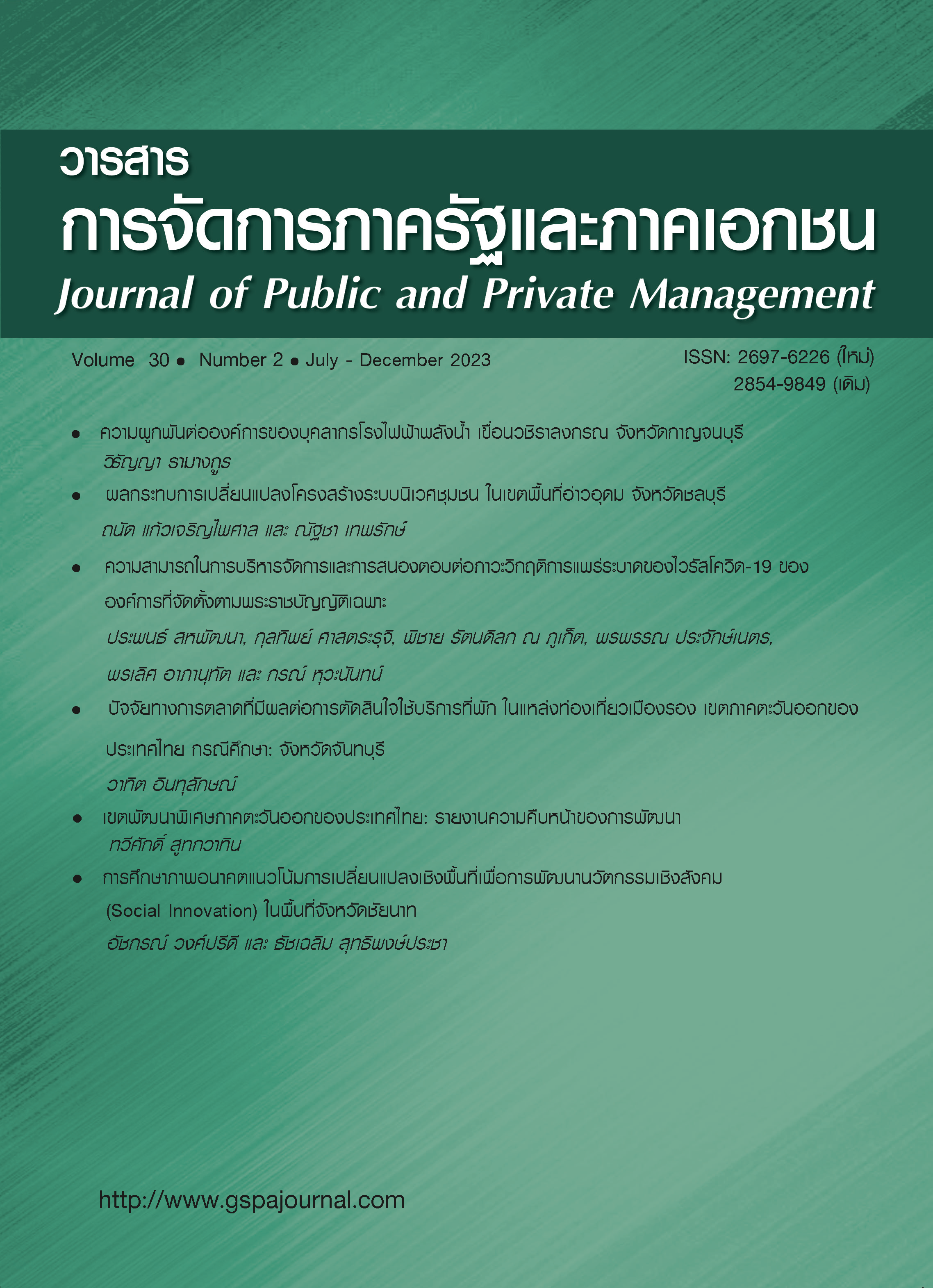Eastern Special Development Zone of Thailand: Development Progress Report
Keywords:
CIPP modelAbstract
This article aims at using Stufflebeam’ CIPP model to evaluate one of the Special Zone Economics Areas, Thailand: the Eastern Economics Corridor (EEC.). The Stufflebeam’s CIPP model consists of 4 steps: 1) context evaluation, 2) input evaluation, 3) process evaluation, and 4) product evaluation. The objectives of the CIPP model are to find information for decision making on each step of Public Policy Process, that are 1) public policy formulation, 2) public policy implementation, and 3) public policy evaluation.
References
Eastern Economic Corridor. (B.E.2563). Raingan Prachumpee 2563.
_______________________. (B.E.2564). Raingan Prachumpee 2564.
_______________________. (B.E.2565). Raingan Prachumpee 2565.
_______________________. (B.E.2565). EEC: Kwa Pai Dua Kan…Kab Khan Troeb To Tee Dee Nai Tuk Miti.
Eastern Special Development Zone Act 2018. (B.E.2561). Royal Gazette No. 135 Vol. 34 Kor.
National Strategy Preparation Act 2017. (B.E.2560). Royal Gazette No. 134 Vol. 79 Kor.
Office of the National Economic and Social Development Council. (B.E.2566). Raingan Sarub Pon Khan Dum Noen Ngang Tam Yuttasat Chat B.E.2565.
Prakad Rueng Yuttasat Chat (B.E.2561-2580). (B.E.2561). Royal Gazette No. 135 Vol. 82.
Stufflebeam, D. L., & Shinkfield, A. J. (2007). Evaluation Theory, Models, and Applications. San Francisco: John Wiley & Sons, Inc.
Stufflebeam, D. L., & Zhang, G. (2017). The CIPP Evaluation Model: How to Evaluate for Improvement and Accountability. New York: The Guilford Press.
Downloads
Published
How to Cite
Issue
Section
License

This work is licensed under a Creative Commons Attribution-NonCommercial-NoDerivatives 4.0 International License.



